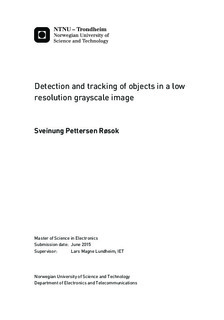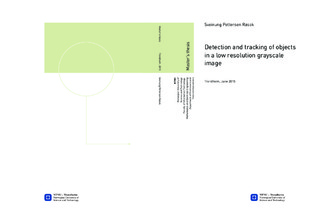| dc.description.abstract | Tracking is the technique of following an object in motion. We use tracking technology on an everyday basis through Navigation GPS in cars or smart phones. Many of these units also feature touch displays, which allow interaction using a finger or touch stylus. This master thesis focuses on with tracking fingers on touch displays, which appear as objects on a low-resolution image. Touch displays often use a low resolution sensor grid, which requires subpixel estimation prior to tracking. The coordinates produced by the tracking system is used by an application level not included in this project, which analyzes the input location and motion. With higher accuracy of the position and tracking, the smaller symbols can be utilized on the display, and the more sophisticated motions are possible to interpret for the application level. The tracker system is designed to work in real time for any touch display and tracks up to two fingers of any size.
High tracking accuracy was achieved using digital signal processing techniques. A signal processing model was created initially to define the system. The tracker system created consists of two modules: A scanner and a tracker. The scanner analyzes the data sets individually, and produces a high-resolution two-dimensional coordinate for each input. The tracker analyzes these observations collectively, validates that these are not caused by noise, and filters the positions through a (Kalman) tracking filter. Evaluation of the system was performed using data sets from a real touch display as well as simulated data sets.
Some assumptions and limitations had to be made to successfully handle all situations found in the data sets. Pressing hard on the touch displays creates large objects, and a size estimation algorithm was made. This was based on a sensor value threshold, but this makes the program non-ideal for displays with low signal to noise ratio. Two close objects might also be falsely identified as one large object, but this was solved in this project using previous knowledge and adjusting the sensor values to force the scanner to produce two outputs. Lastly, the tracking filter smoothed the trajectory of the objects, but it did not always provide better accuracy. A tracking filter should be considered based on the application intended.
All situations in the real data sets were handled, albeit with reduced accuracy for large objects and for two close objects. Further research involves handling three or more inputs, performing a running cost analysis of the algorithm and implementing this on a real tablet. Implementation will require an adjustment of the different thresholds and settings to match the touch display with regards to node resolution, sampling rate and sensor noise. This can be solved by the application level or further development of the tracker system. | |

